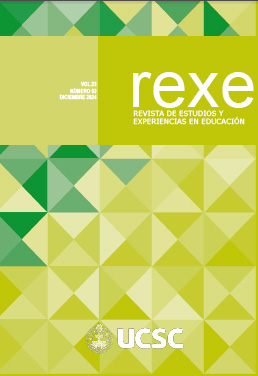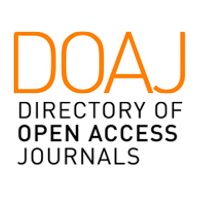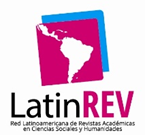Interacciones de estudiantes de pedagogía en un foro de discusión
DOI:
https://doi.org/10.21703/rexe.v23i53.2634Keywords:
b-learning, Foros de discusión, Interacción, Actividades autónomas del estudianteAbstract
The use of virtual learning environment in higher education has allowed the development of complementary activities to face-to-face classes. Online discussion forums as an asynchronous communication option make collaboration and knowledge construction among students possible through different types of interactions. The objective of this study was to determine the structure of interactions in a discussion forum, in which first-year pedagogy students participated, depending on sex and career of origin. A Social Network Analysis was used to characterize the structure of the interactions. The UCINET software allowed an analysis of student-student(s) interactions, through basic indicators of centrality and cohesion. The NETDRAW software made it possible to visualize the structure of the interactions based on the variables already defined. Students interacted more frequently with others from the same career and women participated more; however, no significant differences were found. Using other Social Network Analysis measures will allow to have a more complete view of the interactions produced as well as whether there are differences according to the selected variables.
Downloads
References
Arana Delgado, J. C. y Carpio Vásquez, W. (2021). Implementación de una estrategia virtual de aprendizaje y el logro de competencias en el estudiante universitario. Horizontes Revista de Investigación en Ciencias de la Educación, 5(18), 416-425. https://doi.org/10.33996/revistahorizontes.v5i18.184
Borgatti, S.P., Everett, M.G. & Freeman, L.C. (2002). Ucinet for Windows: Software for Social Network Analysis. Analytic Technologies.
Castellanos Ramírez, J. C. (2023). Asynchronous interaction and discursive resources for knowledge construction in times of pandemic [interacción asíncrona y recursos discursivos para la construcción del conocimiento en pandemia]. Human Review. International Humanities Review / Revista Internacional de Humanidades, 18 (1). https://doi.org/10.37467/revhuman.v18.4853
Castellaro, M. y Peralta, N. S. (2020). Pensar el conocimiento escolar desde el socioconstructivismo. Interacción, construcción y contexto. Perfiles Educativos, 42 (168), 140-156. https://doi.org/10.22201/iisue.24486167e.2020.168.59439
Chen, C-M., Li, M-C., Chang, W-C., Chen, X-X. (2021). Developing a Topic Analysis Instant Feedback System to facilitate asynchronous online discussion effectiveness. Computers & Education, 163,104095. https://doi.org/10.1016/j.compedu.2020.104095.
Choi, B. (2023). Examining the relationships of the students’ participation patterns with their learning satisfaction and learning achievement in asynchronous online discussions. International Journal of Technology in Education (IJTE), 6(3), 349-363. https://doi.org/10.46328/ijte.420
Davidson-Shivers, G. & Rand, A. (2023). Asynchronous Tools for Interaction and Collaboration. En: Zawacki-Richter, O., Jung, I. (eds) Handbook of Open, Distance and Digital Education. (pp.989–1002). Springer. https://doi.org/10.1007/978-981-19-2080-6_56
Dewi, G. & Santosa, M. (2022). Students’ Perception on the Facilitation Strategies Provided by Teachers in Asynchronous Online Discussion. LLT Journal: A Journal on Language and Language Teaching. 25, 160-170. https://doi.org/10.24071/llt.v25i1.3579
De Weber, B., Schellens, T. & Van Keer, H. (2006). Content analysis schemes to analyze transcripts of online asynchronous discussion groups: A review. Computers & Education 46(1), 6-28. https://doi.org/10.1016/j.compedu.2005.04.005
Fehrman, S. & Watson, S. L. (2020). A Systematic Review of Asynchronous Online Discussions in Online Higher Education, American Journal of Distance Education, 27(1) 1-14. https://doi.org/10.1080/08923647.2020.1858705
García-García, F., López-Francés, I. y Molla-Esparza, C. (2023). Análisis de redes sociales para la inclusión entre iguales en discusiones en línea con estudiantes de Universidad. Pixel-Bit. Revista de Medios y Educación, 66, 7-29. https://doi.org/10.12795/pixelbit.95555
Gros Salvat B. y Adrián, M. (2016). Estudio sobre el uso de los foros virtuales para favorecer las actividades colaborativas en la enseñanza superior. Education in the Knowledge Society (EKS), 5(1). https://doi.org/10.14201/eks.14357
Hirumi, A. (2002). The design and sequencing of e-learning interactions: A grounded approach. International Journal on E-Learning, 1(1), 19-27.
Jo, I., Park, Y. & Lee, H. (2017). Three interaction patterns on asynchronous online discussion behaviours: A methodological comparison. Journal of Computer Assisted Learning, 33(2), 106–122. https://doi.org/10.1111/jcal.12168
Knouzi, I. & Mady, C. (2017). Mapping Asynchronous Forum-based Interaction Patterns between Second Language Educational Researchers and Practitioners. Theory and Practice in Language Studies, 7(1), 1-11. https://doi.org/10.17507/tpls.0701.01.
Liang, H., Qi, C., Huang, R., Zuo, H. & He, J. (2024). Mathematics teachers’ interaction patterns and role changes in online research-practice partnerships: A social network analysis. Computers & Education, 218, 105077. https://doi.org/10.1016/j.compedu.2024.105077.
Lim, J. (2023). Exploring the relationships between interaction measures and learning outcomes through social network analysis: the mediating role of social presence. Int J Educ Technol High Educ 20, 14. https://doi.org/10.1186/s41239-023-00384-8.
Martono, F. & Salam, U. (2017). Students' Learning in Asynchronous Discussion Forums: A Meta-Analysis. International Journal of Information and Communication Technology Education, 13(1), 48-60. https://doi.org/10.4018/IJICTE.2017010105
MINEDUC (2006). Estándares de Tecnologías de la Información y Comunicación para la Formación Inicial Docente. MINEDUC.
MINEDUC (2013). Matriz de Habilidades TIC para el Aprendizaje (HTPA). MINEDUC.
Oyarzun, B. & Martin, F. (2023). A systematic review of research on online learner collaboration from 2012-21: Collaboration technologies, design, facilitation, and outcomes. Online Learning, 27(1), 71-106. https://doi.org/10.24059/olj.v27i1.3407
Reigeluth, C. M. (1999). What is instructional-design theory and how is it changing? In C. M. Reigeluth (Ed.), Instructional-design theories and models: A new paradigm of instructional theory (Vol. II, pp. 5-29). Lawrence Erlbaum Associates.
Tirado-Huerta, R., Maraver-López, P. & Hernando-Gómez, A. (2017). Patterns of Participation and Social Connections in Online Discussion Forums. Small Group Research, 48(6), 639-664. https://doi.org/10.1177/1046496417710726
Vygotsky, L. S. (2012). Mind in Society: Development of Higher Psychological Processes. Harvard University Press
Xia, J., Fielder, J. & Siragusa, L. (2013). Achieving better peer interaction in online discussion forums: A reflective practitioner case study. Issues in Educational Research, 23(1), 97-113.
Xie, K., Yu, C. & Bradshaw, A. C. (2014). Impacts of role assignment and participation in asynchronous discussions in college-level online classes. The Internet and Higher Education,20, 10-19. https://doi.org/10.1016/j.iheduc.2013.09.003
Ye, D. & Pennisi, S. (2022). Analysing interactions in online discussions through social network analysis. Journal of Computer Assisted Learning, 38(3),784–796. https://doi.org/10.1111/jcal.12648
Yücel, Ü. A. & Usluel, Y. K. (2016). Knowledge building and the quantity, content and quality of the interaction and participation of students in an online collaborative learning environment. Computers & Education, 97, 31-48. https://doi.org/10.1016/j.compedu.2016.02.015.
Zydney, J.M., de Noyelles, A. & Seo, K. K-J. (2012). Creating a community of inquiry in online environments: An exploratory study on the effect of a protocol on interactions within asynchronous discussions. Computers & Education, 58(1), 77-87. https://doi.org/10.1016/j.compedu.2011.07.009.
Downloads
Published
Issue
Section
License
Open Access Policy
This journal provides immediate open access to its content, based on the principle that offering the public free access to research fosters greater global knowledge exchange.
License
The REXE Journal, “Journal of Studies and Experiences in Education,” published by the Faculty of Education at the Universidad Católica de la Santísima Concepción, is distributed under a License. Creative Commons Atribución 4.0 Internacional.






